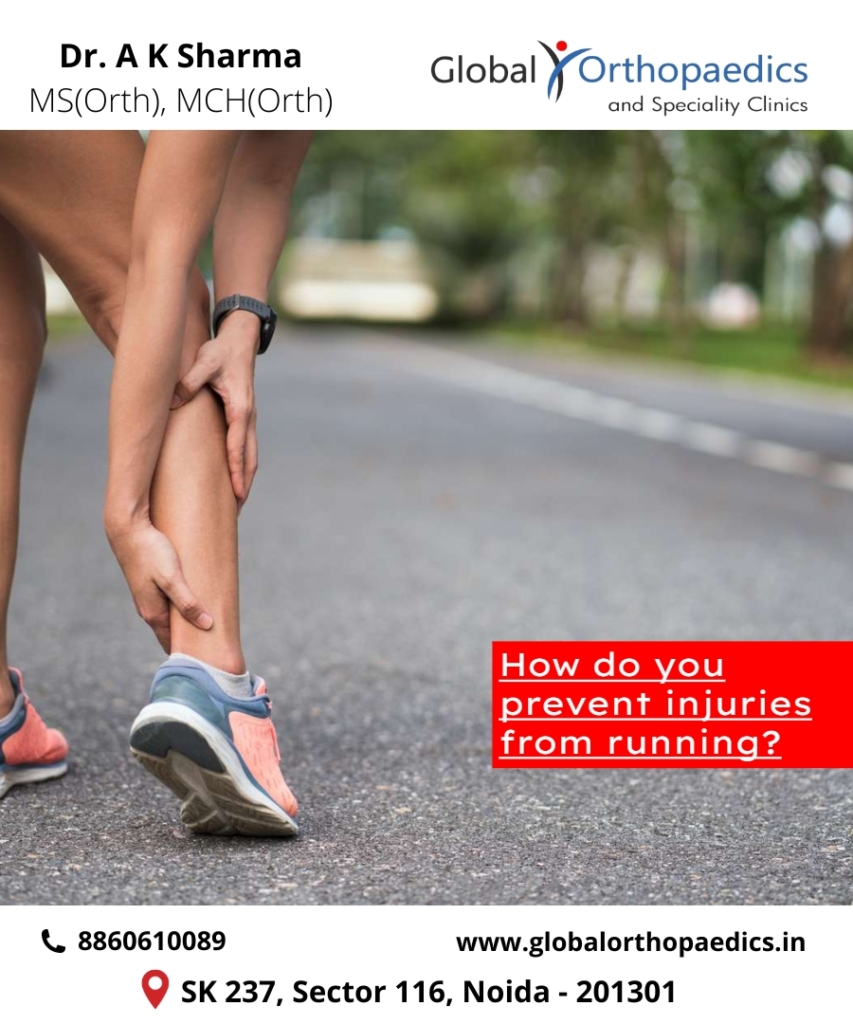One of the most frequent complaints made by beginner runners is running injuries. The main cause of injuries sustained by your body during training is doing too much, too soon. The main causes of injuries are overexertion and poor training techniques.

Throughout your training, it’s critical to keep your body warm and pay attention to it. Aside from impeding the advancement of your training regimen, injuries also change the direction of your run. However, by adopting a few measures, accidents associated to running can be avoided.
Here are some helpful hints to lower your chance of being hurt when running:
1. Before and after a run, warm up and cool down.
- It is possible to prevent muscle cramps and discomfort by warming up for 10 minutes before and after a run.
- This helps your muscles release stored lactic acid and gets them ready for a seamless, cramp-free run.
2. Make weightlifting a priority.
- Strength training activities are a staple of the training regimens of runners who swear by them for increased strength and endurance.
- Muscle tiredness can be avoided by doing strength training exercises at least twice a week.
- To strengthen every muscle area, plyometric training, weight training, and hill running are all excellent workouts.
3. Maintain your fluid intake.
- Muscle tiredness will occur more quickly if dehydrated. Drink 400–600 ounces of fluids or so two hours prior to a run to avoid it.
- Drinking electrolyte-containing liquids is a good way to stay hydrated when running.
- The best source of information about your state of hydration is your body. When you start to feel parched, sip lots of water.
4. Vary up your exercise regimen.
- Running is a strenuous exercise. Your body will be prepared to withstand the strain of running when you gradually increase the volume, length, and intensity of your exercise.
- Engage in aerobic exercise to expand your lung capacity.
- For a personalised training plan, speak with sports injury doctor in Delhi NCR.
5. Take pauses and cross-train.
- Playing football, swimming and rollerblading are excellent cross-training activities to raise your fitness levels.
- Give yourself a few days break from your workout regimen so that your body may recuperate from the running.
6. Consult a specialist.
- Consult with Dr. A K Sharma – sports injury doctor in for suggestions. Their advice can help you run more efficiently and with better form.
- With the assistance of an expert, you can also create a training programme that is tailored to your desired outcomes.
- Professionals can offer advice on the best type of shoe or orthotic to wear so you can prevent injuries when working out.
7. Select the appropriate footwear.
- Running in the incorrect shoes is the leading cause of injury among runners.
- Before making a purchase, select your running shoes from specialty retailers and try them on.
- Your ideal shoe should fit your foot type and dimensions.
- Once you’ve run 400 miles, replace your running shoes.
Keep an eye on your health and avoid injuries for a successful run. Injuries will cause you to slow down and will also rob you of valuable training time. Observe these basic guidelines from Dr. Ashok Kumar Sharma to ensure a run free of injuries.


